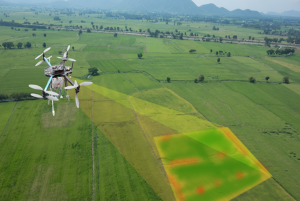Doutorando: Rodrigo Galvão de Freitas. Orientador: Acelino Couto Alfenas. (15/05/2018, às 17:00 horas). Plant disease cause economically important loss of yield and quality of agricultural production worldwide, thus affecting food safety and security. The use of innovative technologies summarized as “Precision Agriculture” is a promising approach to optimize agricultural production of crops. One of the approaches of these technologies is the capture of images from optical sensors. This seminar will discuss different technologies from these sensors and platforms where them can be coupled for the analysis of diseases in the field. Leaf reflectance of sunlight in the visible (VIS), near infrared (NIR) and short wave infrared (SWIR) are driven by multiple interactions: radiant energy absorption induced by leaf pigments, scattering of light as a result of internal cellular structures and radiant energy absorption induced by leaf water content. Reflectance of leaves is sensitive to plant stress due to changes in pigmentation and cell degradation and the best results for the detection of diseases were obtained in the VIS and NIR range of the spectrum. Spectral image sensors have been proved to be useful tools to detect changes in reflectance result from modifications of biophysical and biochemical characteristics of plant tissue. Multispectral cameras were the first spectral sensors invented and the evolution of modern hyperspectral sensors increased the complexity of the obtained data. The optical sensors can be implemented on different scales from single cells to entire ecosystems and depending on the scale, different platforms can be operated. The Unmanned Aerial Vehicle (UAV) remote sensing platforms are among the technologies that have been recently applied to remote sensing of vegetated areas. Traditional remote sensing technologies based on satellite and aircraft platform, are continuously improving in terms of spatial and temporal resolution. In addition, new technologies have developed these sensors coupled in robots, allowing a greater automation of the technique and increasing the precision of the obtained data. Each of these platforms has pros and cons that involve technological, operational and economic factors and its use depends on the field characteristics and the involved pathosystem.

